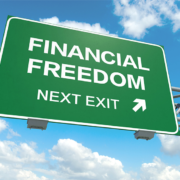SNOW AND MARKET TIMING
As originally appeared in The Jerusalem Post on January 18th, 2019.
I’m not a reckless person, in the sense that I wouldn’t do something that’s reckless or dangerous, because I’m a pretty careful person. For example, I don’t snow ski. I did it once, and I promised God I’d never do it again if I lived through it. –Mike Huckabee
Thankfully we made it through the snowstorm of this past Wednesday evening. Okay, so maybe calling the 1-2cm that stuck to the ground a snowstorm is exaggerating just a bit, but when you haven’t had any of the white stuff in 4 years and then get to throw a few snowballs and make a snowperson, that to me qualifies as a snowstorm. There were two events that happened to me surrounding the snow that I think can be taken and used as a reminder regarding investing.
Thursday morning while I was driving one of my daughters to her high school, she was running late- I mentioned a few weeks ago that that’s an issue!- she actually looked up from her phone and asked me if it was going to snow again. I was stumped. I mean there is a pretty good chance that it will snow again sometime in the future, but maybe she was talking about the rest of the winter. I asked her to clarify, and she looked at me like I was an alien. That is actually a look that I am used to; it must be the joy of having teenagers. She said, “the current winter, duh”. So I responded that I have no idea, how would I know? She made some kind of sound and went back to doing something on her smartphone.
The second event actually happened during the snow. I wasn’t paying attention to what was happening outside, and when I finally left my office, a mix of snow, sleet and hail where flying through the air horizontally because there were gale force winds that pounded me non-stop for the half an hour it took me to walk home. On the way, at Paris square, I noticed a snowplow parked on the side of the road. I just wondered why it wasn’t plowing and salting the streets. After all, there was snow sticking. It seemed like they wanted to let the streets become un-drivable and dangerous and then they would start to clean them.
Bad feeling
Especially after the market drops and I speak with clients about maybe investing some of the money they have sitting around in cash, I often receive responses like “I have a bad feeling about the market” or “I want to make sure that the market is going up before I invest”. This leads to an issue that I have mentioned numerous times, and that’s that investors who try and predict the future, or in investing parlance “ timing the market” usually end up with lower returns than investors who stay the course and are fully invested.
Humphrey Thomas, CEO of HG Thomas Wealth Management, writes at CNBC.com “Longer-term approaches are a better strategy. JP Morgan compiled some research showing the importance of this. They tracked the performance of a $10,000 investment in the S&P 500 over a 20-year period. It showed a healthy average return of 9.85 percent per year. But they modeled what would happen if the investor withdrew from the market temporarily and missed the 10 biggest days on the stock market for that 20-year period (just 10 days out of 7,304). The result was a reduced return from 9.85 percent to 6.1 percent, which means a decrease of $32,665 in gains. And the more days missed, the lower the gains fell.” It’s just like the snowplow waiting and waiting for more snow to accumulate before starting to work.
Thomas then continues and brings an incredible statistic. “Nobel laureate William Sharpe found that “market timers” must be right an incredible 82 percent of the time just to match the returns realized by buy-and-hold investors.”
The 82% hit rate is virtually impossible to accomplish. If most professionals can’t even come close to that kind of success rate then a retail investor has almost no chance.
The tried and tested way to make money in the market is to be in it for the long-term. I hate cliché’s but in this case, there is a good one about the way to make money by investing.“ It’s time in the market, not trying to time the market.” Before investing, figure out your goals and needs and then create a portfolio that will enable you to achieve whatever it is that you are trying to accomplish financially. Then allocate the money accordingly and that will help you manage risk and ease the market roller coaster. That’ is a much better formula for success than trying to predict the future.
The information contained in this article reflects the opinion of the author and not necessarily the opinion of Portfolio Resources Group, Inc. or its affiliates.
Aaron Katsman is author of the book Retirement GPS: How to Navigate Your Way to A Secure Financial Future with Global Investing (McGraw-Hill), and is a licensed financial professional both in the United States and Israel, and helps people who open investment accounts in the United States. Securities are offered through Portfolio Resources Group, Inc. (www.prginc.net). Member FINRA, SIPC, MSRB, FSI. For more information, call (02) 624-0995 visit www.aaronkatsman.com or email aaron@lighthousecapital.co.il.








